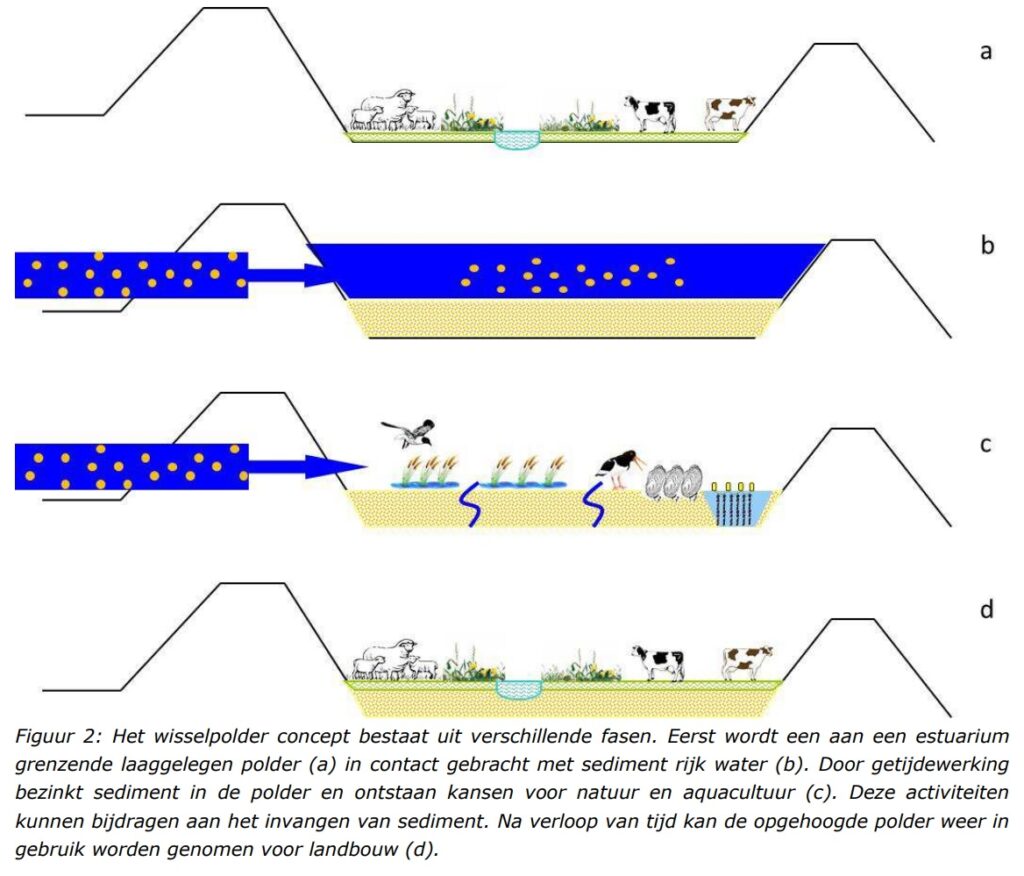Early this year Wageningen University presented the report ‘A natural future for the Netherlands in 2120’. In this report, the university sketches a picture of what the Netherlands could look like in a century’s time, by working more with nature and making use of its ecological resilience. The research into Building with Nature in the Westerschelde, carried out by student Kasper de Vaan in recent months, builds on this idea. He researched the possibilities for this within the south-western delta, to stop ‘drowning’ of this area. Which Building with Nature methods are applicable in the southwestern delta?
Kasper de Vaan did his research during an internship at EcoShape and Van Oord, based on his Master’s degree in Marine Sciences in Utrecht. During my master’s, I focused mainly on oceans. But my area of interest remains the coastal zone, the place where the consequences of climate change will be greatest… A fellow student told me about Building with Nature. I plunged into it and saw the added value of it’.
Exchange polders
Before starting his internship, he wrote his thesis at NIOZ with Tjeerd Bouma and Jim van Velzen as supervisors. ‘In determining the subject, we arrived at research into exchange polders in the Westerschelde estuary. A exchange polder is an inner dike area in which you allow tidal effects to enter. This causes sedimentation. After a few decades, the area is then raised to medium high tide. The dike can then be closed again and can again be used for agriculture’.
Western Scheldt
‘For the Western Scheldt estuary, I carried out research into the effectiveness of exchange polders to dampen the effect of a storm surge. I made a model for this in Python. How would it work if there was a storm? What happens to the water level in the polders and estuary? The model showed that you need a lot of polders to dampen the storm surge. Conclusion: you won’t get there with one solution. So I put in my recommendation that you have to make a complete system approach. There are multiple Building with Nature applications to protect every location against the water’.
After his thesis, interest remained in the Southwest Delta and in Building with Nature. Kasper: ‘I wrote to Van Oord for my internship. They work on great projects and do interesting collaborations. I wanted to work on a project. That’s how I came into contact with Jurre de Vries. Together with Erik van Eekelen, he organises Building with Nature workshops at Van Oord and he works with Joost Stronkhorst of the Hogeschool Zeeland. Together we came up with an internship assignment: An exploration of the large-scale possibilities of building with nature in the Southwest Delta’.
Selection of solutions
Through a literature study on the recent history of the Southwest Delta and a study of the Building with Nature Guidelines, Kasper mapped the possibilities for this area. Not only technically, but also socio-economically. Kasper: ‘The tidal current in the Western Scheldt is very strong, by lowering it further erosion can be limited and/or sedimentation on the plates can be increased. A solution to reduce the dynamics is by widening the estuary. However, this means that land has to be given on it. Giving up land is by no means possible and/or desirable everywhere, so it is essential to take the wishes of the inhabitants into account. From the available options I have selected methods that contribute to sediment retention, because this delta ‘drowns’. That is what we want to prevent. Another selection criterion was applicability at the boundary between water and land, so that they also contribute to flood safety. The third selection criterion was applicability in the short term, i.e. in the period up to 2050′.
‘That is why I researched sand nourishments, oyster banks and exchange polders for both the Western and Eastern Scheldt. For this purpose, I made suitability maps in GIS on the basis of predetermined criteria. The maps indicate in particular which areas are suitable according to physical criteria. I also included the effect of salinification, but that still needs further research. I had not yet included the desirability of a solution’.
Stakeholders
During a virtual brainstorming session with stakeholders, the following emerged: exchange polders are going to provoke a lot of resistance. It has to be worked out bottom-up, for example by working from pilots. The participants in the workshop were Rijkswaterstaat, Deltares, NIOZ, EcoShape, Van Oord and Hogeschool Zeeland. During the workshop we discussed the maps and the criteria used. In small groups we then discussed the challenges and possible collaborations per method. And not unimportantly: how does the current policy agenda fit in?
The workshop showed that sand nourishment was the most feasible solution, followed by oyster banks, although their operation is still somewhat uncertain. The exchange polder turned out to be less promising, due to the limited support that was expected among the population. Another outcome: the online environment ‘Storymaps’ turned out to be a good environment to visualise and present these kinds of plans.
Continuation
Joost Stronkhorst and Alco Nijssen of the research group Building with Nature of the Hogeschool Zeeland will continue the research. They are further elaborating the suitability maps and adding up-to-date information and want to discuss this with the province.

Klimaatbestendige dijken: het concept wisselpolders (2013)
Mesel, I.G. de; Ysebaert, T.; Kamermans, P.
